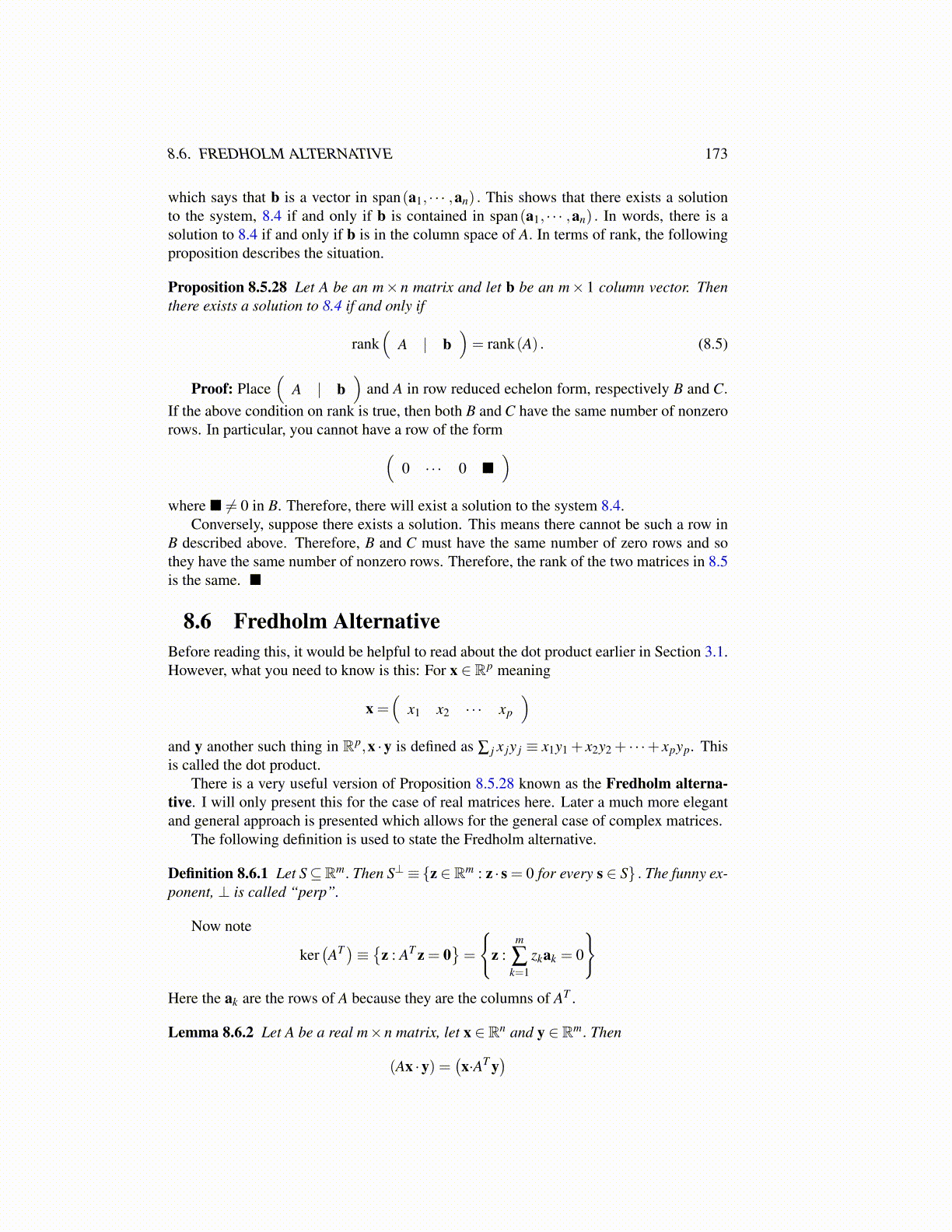
8.6. FREDHOLM ALTERNATIVE 173
which says that b is a vector in span(a1, · · · ,an) . This shows that there exists a solutionto the system, 8.4 if and only if b is contained in span(a1, · · · ,an) . In words, there is asolution to 8.4 if and only if b is in the column space of A. In terms of rank, the followingproposition describes the situation.
Proposition 8.5.28 Let A be an m× n matrix and let b be an m× 1 column vector. Thenthere exists a solution to 8.4 if and only if
rank(
A | b)= rank(A) . (8.5)
Proof: Place(
A | b)
and A in row reduced echelon form, respectively B and C.
If the above condition on rank is true, then both B and C have the same number of nonzerorows. In particular, you cannot have a row of the form(
0 · · · 0 ■)
where ■ ̸= 0 in B. Therefore, there will exist a solution to the system 8.4.Conversely, suppose there exists a solution. This means there cannot be such a row in
B described above. Therefore, B and C must have the same number of zero rows and sothey have the same number of nonzero rows. Therefore, the rank of the two matrices in 8.5is the same. ■
8.6 Fredholm AlternativeBefore reading this, it would be helpful to read about the dot product earlier in Section 3.1.However, what you need to know is this: For x ∈ Rp meaning
x =(
x1 x2 · · · xp
)and y another such thing in Rp,x ·y is defined as ∑ j x jy j ≡ x1y1 + x2y2 + · · ·+ xpyp. Thisis called the dot product.
There is a very useful version of Proposition 8.5.28 known as the Fredholm alterna-tive. I will only present this for the case of real matrices here. Later a much more elegantand general approach is presented which allows for the general case of complex matrices.
The following definition is used to state the Fredholm alternative.
Definition 8.6.1 Let S⊆Rm. Then S⊥ ≡{z ∈ Rm : z · s = 0 for every s ∈ S} . The funny ex-ponent, ⊥ is called “perp”.
Now note
ker(AT )≡ {z : AT z = 0
}=
{z :
m
∑k=1
zkak = 0
}Here the ak are the rows of A because they are the columns of AT .
Lemma 8.6.2 Let A be a real m×n matrix, let x ∈ Rn and y ∈ Rm. Then
(Ax ·y) =(x·AT y
)